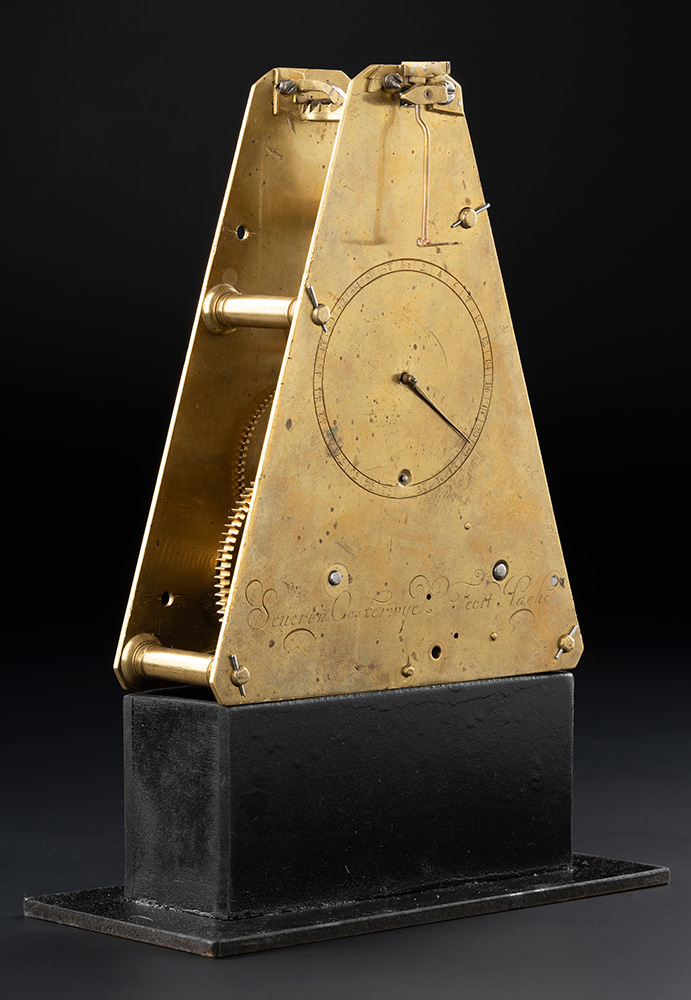Bruce - Oosterwijck Longitude Sea Clock
Severyn Oosterwijck
- Art Funded
- 2018
- Vendor
- Private collection
This exceptional example of a 17th-century sea clock, made only about five years after the invention of the pendulum clock, has a remarkable story and strong Scottish links.
After the invention of the first pendulum clock around 1656, its creator, the Dutch astronomer and mathematician Christiaan Huygens, turned his attention to the creation of a sea clock for the determination of longitude. The science was clear: as the Earth rotates, the difference between local time and a reference time allows the determination of longitude; the technical challenge to overcome was how to determine this reference time aboard an unsteady ship.
One of Huygens’ collaborators was Alexander Bruce, 2nd Earl of Kincardine, a Scotsman who lived in the Netherlands in the late 1650s as part of the royal court in exile. Bruce introduced his own features to Huygens’ designs and had four sea clocks made, two of them by the leading clockmaker Severijn Oosterwijck in The Hague. The resulting piece of Golden Age Dutch craftsmanship combines functional elegance with innovative design. Trials were carried out on the clocks, but the initially favourable reports were later found to be untrustworthy and the attempt to solve the problem was abandoned.
This is one of two triangular sea clocks commissioned by Bruce which are known to have survived; both were converted into domestic clocks in the 17th century. The example of Scottish Enlightenment science, design and international collaboration now joins the National Museum of Scotland’s collection.
Provenance
Commissioned in 1662 by Alexander Bruce of Kincardine (1629-1681) from SeverynOosterwijck of The Hague; Used for sea trials in the 1660s then disappears from historical record;reappears in 1972 in ownership of clock dealer Meyrick Neilson (1912-2005); b


